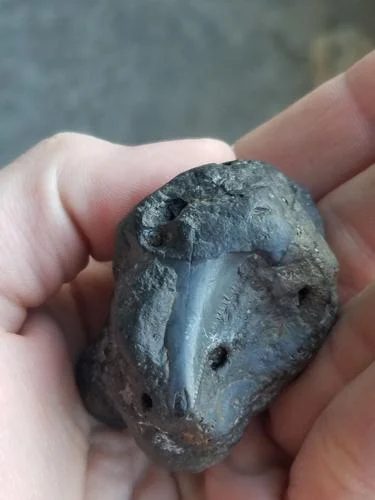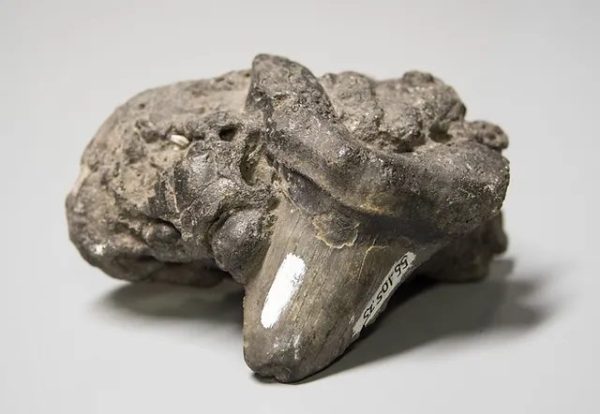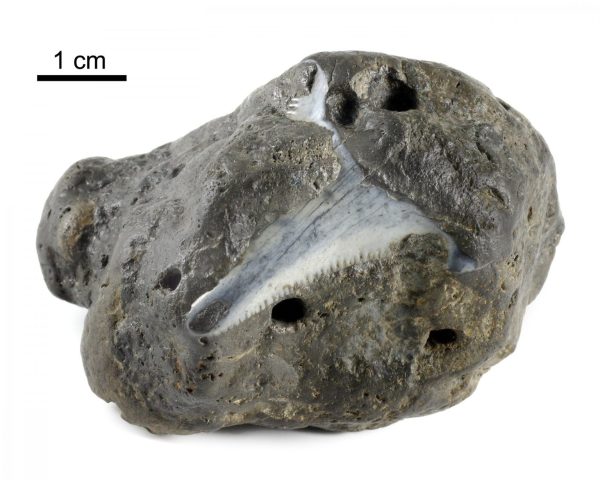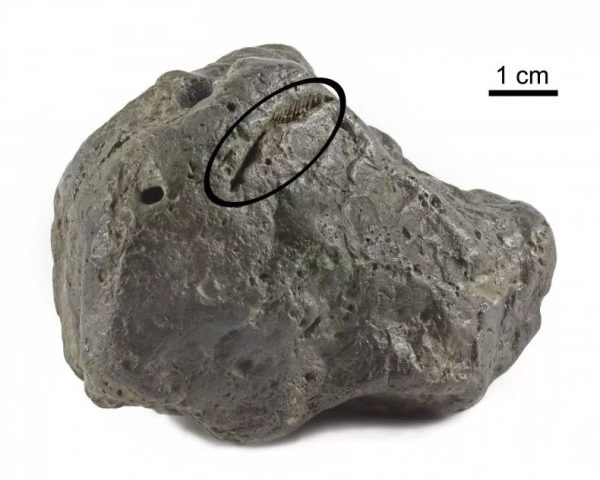Sifting through the murky depths of the Cooper River near Hanahan, professional diver Mark Stitzer Jr. stumbled upon a rather peculiar discovery a few months ago. What initially appeared to be an unusual rock turned out to be a piece of coprolite, or fossilized dung, containing a 30-million-year-old shark tooth.

While stumbling upon ancient shark teeth in the riverbed is not entirely unheard of, finding one nestled within fossilized alligator dung is a rarity that left Stitzer astounded. The unique nature of his find prompted him to seek the expertise of George Frandsen, the curator of the Poozeum, an online repository dedicated to fossilized excrement.
Frandsen, who boasts the largest collection of fossilized waste material in the world, confirmed the exceptional nature of Stitzer’s discovery. To his knowledge, this marked the first instance of a shark tooth being found in conjunction with coprolite.

The sighting not only intrigued Stitzer but also shed light on the rich paleontological heritage of the South Carolina coast, known for yielding various prehistoric relics due to its submerged past.
The region’s history as an underwater landscape has rendered it a haven for fossil enthusiasts and divers seeking ancient treasures. Fossilized shark teeth, bones, and coprolites have all been unearthed from the riverbanks as enduring remnants of an era long past. The rapid burial and mineralization processes have transformed once putrid wastes into durable rock-like formations, preserving a snapshot of prehistoric life.

Upon examination, Frandsen determined the embedded tooth to belong to a crocodilian ancestor, likely an ancient relative of the present-day alligator. Fascinatingly, the tooth’s placement within the coprolite revealed a curious interaction with a prehistoric shark. Frandsen discerned evidence of a brief encounter where the shark sampled a bite of the dung, only to discard it, inadvertently embedding its tooth in the process.

Recognizing the uniqueness of his find, Stitzer’s tooth-in-dung specimen now enjoys a temporary showcase at the Scoop on Poop exhibit hosted by the Florida Museum of Natural History in Gainesville, Florida.
The exhibit, which explores the diverse world of fossilized excreta, serves as a platform for intriguing discoveries such as Stitzer’s remarkable find, which continues to captivate both experts and enthusiasts alike.

In the words of Captain Mark Johnson, who facilitated Stitzer’s dive, the toothy dung serves as a testament to the astonishing wonders awaiting discovery beneath the waters of the Cooper River. Beyond being a one-of-a-kind artifact, it stands as a testament to the enduring allure of paleontological mysteries waiting to be unraveled in the depths of time.





